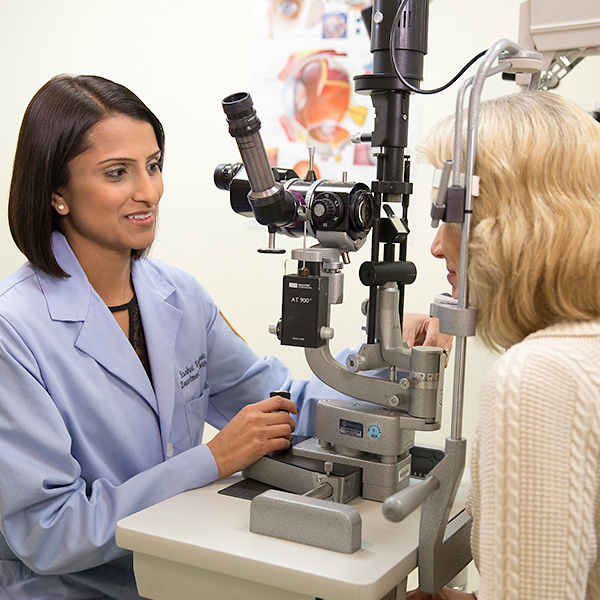Chalazion & Styes
Overview and Facts about Chalazion & Styes
If you have a swollen lump on or near the base of your eyelid, you may have either a stye or a chalazion. A stye, which can also be called a hordeolum, forms at your eyelashes or under your eyelid. It may look like a pimple or just a raised bump.
A chalazion can develop from an internal stye (one that forms inside the eyelid) and can also result from an oil gland becoming clogged. In severe cases, a chalazion can cause pain, swelling, and blurry vision.
Signs and Symptoms of Chalazion & Styes
Styes occur on or near the edge of your eyelid and form a bump. Other stye symptoms include:
- Redness and swelling
- Eye pain
- Itchy eye
- Feeling like there’s something in your eye
- Sensitivity to light
- Excessive tearing
- Crustiness along the eyelid
Causes and Risk Factors of Chalazion & Styes
Anyone can develop a stye or chalazion. Styes often form from a bacterial infection or clogged oil gland. A chalazion can develop from either a stye or from a clogged oil gland.
You may be more likely to develop these ophthalmology conditions if you have:
- Blepharitis (a condition that impacts the edge of your eyelid)
- Had a chalazion or stye before
- Certain skin conditions, like rosacea
- Diabetes
Tests and Diagnosis of Chalazion & Styes
In most cases, your doctor can diagnose a chalazion or stye from a physical examination alone. Further testing is rarely needed. If these bumps continue to return after treatment, your doctor may take a biopsy to ensure there are no further complications.
Treatment and Care for Chalazion & Styes
In most cases, you can treat and care for a chalazion or stye at home. This can be done by using a warm compress three to five times a day for 10 to 15 minutes at a time. This can relieve pain and help unclog the oil gland. Gently massaging the area can also help to clear the oil gland.
If the condition doesn’t get better on its own, your doctor may prescribe you an antibiotic. If you have a large chalazion, your doctor may give you a corticosteroid injection to help reduce swelling and inflammation. In severe cases, your doctor may suggest surgery to drain the area.

Request an Appointment
Whether you are seeking routine eye care or have a specific vision issue, our team treats a wide range of eye diseases and conditions, including cataracts, glaucoma, macular degeneration and strabismus. Schedule an appointment today.
Schedule a Telehealth Appointment
